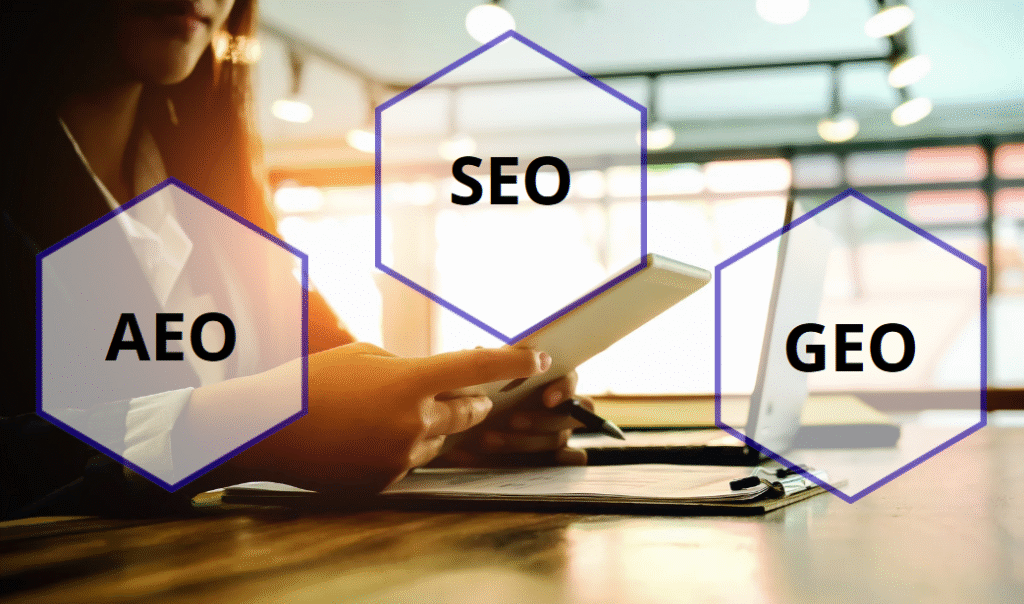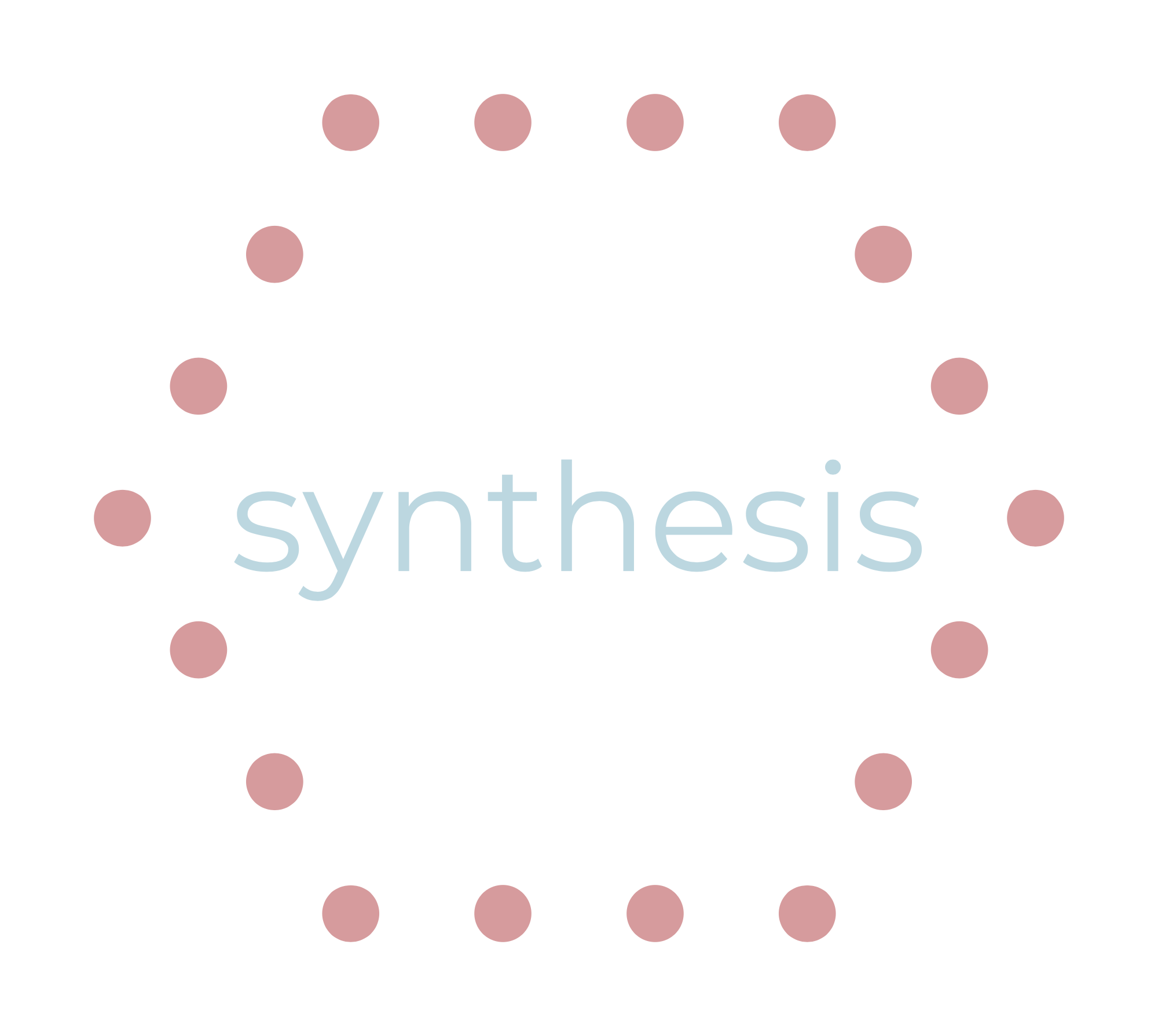AI isn’t just for writing college papers or writing up your weekly meal-prep anymore – AI search is reshaping the digital marketing landscape.
- Only 36% of clicks on a given search term go to the open web – 58.5% of searches are now “zero-click,” meaning the searcher doesn’t go to a website at all.
- A study by Gartner predicts that search engine volume will drop 25% by 2026, with that traffic largely going to AI.
- Google continues to embrace new AI products across its platform, with one executive calling it “inevitable” for traditional Search to lose traffic to Gemini and/or ChatGPT.
- AI Overviews have reduced clickthrough rates by 34.5% (on average) for the top-ranking page.
Optimizing for AI is no longer optional – it’s essential. Getting your website to the top of the search engine results page (SERP) isn’t enough. You need to be included in both Google’s AI products and show up in generative engines like ChatGPT and Perplexity.
So what are these new strategies? Do you really need both AEO (answer engine optimization) and GEO (generative engine optimization)? And where does SEO still fit?
Good news: you don’t have to throw your SEO team (or their work) out the window.
In this guide, we’ll walk you through what these new strategies are, highlight their key differences, and give you practical tips on how to be ready for the next generation of search.
. . .
At Synthesis Insights, we bring years of hands-on experience in SEO, helping businesses enhance their online authority and search rankings through proven off-page strategies. Our data-driven approach ensures businesses enhance their online presence with effective, white-hat SEO tactics. With a track record of helping businesses improve their visibility and credibility, we have the expertise to guide you through the most effective off-page SEO strategies dominating 2025.
. . .
Table of Contents
. . .
What Is Answer Engine Optimization (AEO)?

Answer engine optimization (AEO) is about crafting content that provides concise and direct answers to user questions. This gets your website listed in SERP features you’re already familiar with–featured snippets, knowledge panels, and the ‘People Also Ask’ section–as well as in answers to voice searches such as those powered by Siri and Google Assistant.
It’s ideal for content where a quick, factual response is what the user wants. For example:
- What is the heaviest element on the periodic table? → Oganesson
- What is the capital of Peru? → Lima
- How many planets are in our solar system? → Eight
What Is Generative Engine Optimization (GEO)?

Generative engine optimization (GEO) means building trust and authority with AI tools like Google’s AI Overview, ChatGPT, Perplexity, and Claude so that your content is used and cited in generated responses to search queries. (Generated responses by AI engines = Generative Engine Optimization.)
Think of search questions that might require a synthesis of information, like:
- Ways to lower your blood pressure.
- Popular summer beach-reads.
- How do bees make honey?
How Does SEO Come Into Play?
Traditional SEO still remains the foundation. A lot of the hands-on tactical strategies of how to create content for AEO and GEO are shared by SEO best practices. Ranking in SERPs via keywords, backlinks, and optimized metadata still matters, but alone, it’s no longer enough.
The next generation of search visibility will rely on integrating SEO strategies with AEO and GEO ones:
- SEO gets you found.
- AEO gets you featured.
- GEO gets you cited.
Rather than replacing SEO, AEO and GEO extend it into new territory—SERP features and AI-generated content.
Key Differences Between AEO, GEO, and SEO
AEO, GEO, and SEO are all now core pieces of your cohesive digital marketing strategy. Being able to understand the differences between them, including what they each want to achieve and how you can get there, is key to efficient and effective marketing.
| SEO | AEO | GEO | |
| Goal | Be the #1 result. | Be the zero-click answer. | Be a trusted (and cited!) source for AI. |
| Where? | Google, Bing, and other search results pages. | Featured snippets, knowledge panel, people also ask, voice searches. | Google AI Overviews, Gemini, ChatGPT, Perplexity, Claude, and other AI models. |
| Performance Metric | Ranking position and traffic for keywords. | # of impressions in SERP features, voice search exposure. | Citation frequency and brand mentions in AI Overviews and generated responses. |
| User Intent | Navigational, transactional, or deeper insights from a specific source. | Quick fact-based or informational searches. | Exploratory, complex or multi-layered informational searches. |
| Example Search Term | Best Photo Editing Software 2025 | What is photoshop? | How does photo editing work? |
| Content Focus | Keyword-optimized landing pages, on-page SEO, backlinks, page speed. | Direct, clear, factual, and structured (Q&As, lists, tables) content answering specific questions. | AI-friendly formatting, comprehensive guides, research, and thought leadership on complex topics. |

The New Era of Content Strategy
Content strategy no longer is just for SEO–now it involves AEO and GEO. But what’s changed? Let’s get into the brass tacks of how to optimize for all three, giving your digital marketing strategy the holistic treatment in the AI era:
Choose Keywords Featured in AI Search Results
We have a new metric for targeting keywords: which ones are being featured in AI results? Identify which search terms trigger SERP features and AI Overviews either manually (testing search terms one at a time) or through a tool like Semrush or Ahrefs.- For AEO, look for search terms that require a direct response, something you can quickly answer in a sentence or a short-bulleted list.
- For GEO, look for search terms that are more complicated, ones that would benefit from analysis and a synthesized answer.
Use audience insight tools like AnswerThePublic to explore related queries around your chosen keyword. These additional questions can help you identify where and how to build out content so that your page is providing an in-depth resource that is useful for synthesizing complex questions.
Locate content gaps on your website by seeing which question-based search terms people use to get to your website (you have Google Search Console enabled, right?). If there are any search terms that don’t have a page or page section dedicated to answering them, consider this your sign to go build that.
Use SEO Best Practices To Your Advantage
The same principles that make your content user-friendly, and showcase the E-E-A-T (Expertise, Experience, Authoritativeness, Trustworthiness) of your website are ones you can now focus on optimizing for AEO and GEO. Here are a few ways:- Logical, accurate, headers (your H1 and H2s, H3s, etc.) have always been an SEO best practice. Now, they’re even more critical, since they make it easy for both humans and machines to quickly grasp what your content is about.
- When possible, frame headers as conversational questions and give a direct, concise answer in the next sentence. Choosing the right question as the header (signaling to crawlers, “Hey, look here” and then immediately answering it, is a core AEO strategy.
- Add a table of contents at the top of longer articles with hyperlinks down to each section. It’s more user-friendly (gets ready to the section they care about) and helps crawlers quickly grasp what your page is about.
It’s Past Time For Structured Data
Speaking of “quickly understanding your page”…schema markup isn’t new, but it’s been an SEO ‘best practice’ that often gets bucketed as, “Let’s do this later.” Well, later is now. There are dozens of types of markup supported by Google, but these are among the most important for AEO and GEO:| What | Why? | How |
| Article Markup | Identifies this page as an article, newsarticle, or blogposting. Can mean that images, date, and author information appear in the SERP. | Google | Article Schema Markup Documentation |
| Carousel | Can enable people to swipe through multiple cards from the same website on mobile. | Google | Carousel Schema Markup Documentation |
| Q&A | If your page is structured as a series of questions and answers, using this schema makes you eligible to show up in SERP features and rich search results. | Google | Q&A Schema Markup Documentation |
| Organization | Helps Google better understand your organization. Can influence the appearance of your logo in search results as well as details in your brand’s knowledge panel and profile. | Google | Organization Schema Markup Documentation |
Help AI Understand Your Content
Make sure that your website’s crawl settings are appropriately are appropriately set up, including:- Making sure your robots.txt file allows legitimate AI crawlers and blocks the problematic ones.
- (For now) minimize the use of Javascript, as currently, AI crawlers can’t render it (making any content you have in there invisible to AI). It’s possible that AI will figure out how to render it in the future–it’s a problem that search engines had to solve in the past–but if possible, remove or minimize your use of it.
- Decide if your website would benefit from llms.txt, a new protocol similar to robotx.txt and XML sitemaps being proposed to make it easier for LLMS/AI to parse your website.
Conclusion: Your SEO Team Is Already Prepped To Handle AI Search
The fundamentals of great SEO—clear content, helpful answers, strong sources, structured data—are what AEO and GEO rely on too. Rather than overhauling your SEO strategy, evolve it. Optimize your best-performing content to be both:
- Extractable (for AEO wins like snippets and voice answers), and
- Synthesis-worthy (for GEO visibility in AI-generated summaries and citations).
The future of search is layered. SEO gets you in the index, AEO gets you the spotlight, and GEO makes you part of the story.
. . .
If you enjoyed reading content like this, feel free to check out the other blogs on our website. For more information on how to build a solid off-page SEO strategy, we’d love to get in touch and provide you with a free consultation. Just fill out the form below to book the free offer so we can get you started on your Synthesis Insights journey today!




